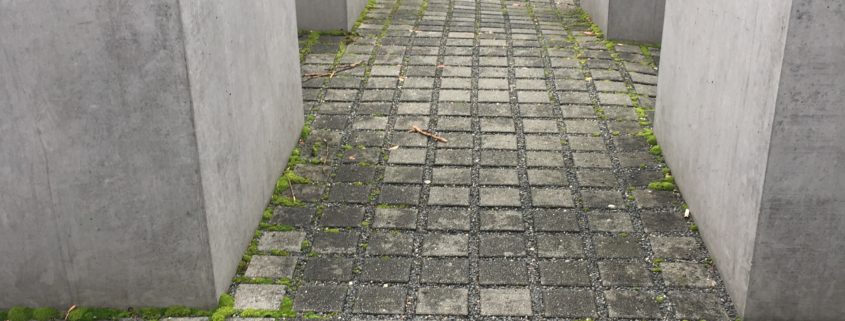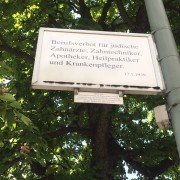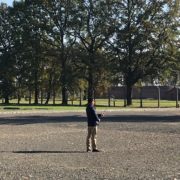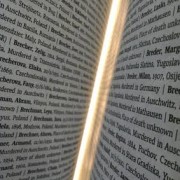Ignoring the Memory of Auschwitz
By Cate Ferson
While looking through the calendar for this program at the beginning of the semester, I felt a mix of excitement and dread when I noticed that we were going to be spending a day at the Auschwitz/Birkenau concentration camp. Those feelings stayed with me until the day we went there. Having studied the Holocaust at school and having visited different Holocaust museums — from Washington DC to Budapest — one would think that I had learned all there was about the Holocaust. However, that was not the case. Nothing could prepare you to actually walk through the camp where more than a million people perished. I felt the weight of the atrocities that happened to the victims with each image I saw, and each path I walked down. I had never felt such a connection to the people who had suffered in the Holocaust before. I figured the weight of this camp would weigh equally heavily on all who took the tour through the camp. But, observing some of the other groups, they acted like it was just another tourist attraction.
As we followed our tour guide through both Auschwitz I and Auschwitz II/Birkenau, there were many large groups of people taking pictures in areas where signs were posted saying not to, and talking in spaces that were meant to be quiet zones out of respect for those who perished there. Of course, I am making generalizations, and there were many people being respectful of the area. However, to me, shocking numbers of people were acting as if they were spending the day touring a college campus. I bring up this issue not so that I can declare myself the perfect spectator, but because I believe that it brings up a bigger problem concerning memory.
The quote “those who cannot learn from history are doomed to repeat it” from George Santayana is tossed around an inordinate amount when talking about the horrors of the past. While it may have reached the status of a cliche at this point, I believe that it is an important point to make when talking about the mass murder of 6 million people. Walking around a Holocaust museum, it is easy to be moved by the facts and photographs that are being presented, but yet still feel a disconnect. Although you are learning about the atrocities that these victims went through, you are learning about it in a safe, enclosed environment, far away from the actual sites. This is why, when touring a camp, one would believe that that disconnect would dissipate, even if it was just for a moment.
A Jewish artist named Shahak Shapira has taken it upon himself to address those tourists that are taking various types of pictures of themselves at the Holocaust Memorial in Berlin. In his project he aptly named “Yolocaust”, Shapira uses the photos of modern day citizens taking selfies, doing yoga, and other such activities on the architecture in the museum, and photoshops them over pictures of Jews during the Holocaust. The only way for the subjects of these photos to have their pictures taken down, they must email him explaining how they were in the wrong. (Please follow a link to his work below.) His work has an incredibly strong impact, as it shows that many people are not absorbing the message these memorials are trying to carry. Rather, they are viewing the unique architecture as a way to show their friends on social media another activity of theirs. I, myself, am an avid user of social media, but it is remarkable how self-absorbed people have become because of it. Shapira’s project seems to be highly effective in making people think about the space in which they are taking these photos. Yet, it is a shame that this project was even necessary in the first place.
If the tour of Auschwitz Birkenau does not cause people to change how they behave in places of memory to the victims, perhaps they have just become numb to the violent nature of humans. Or, they just simply do not care because it is not happening to them, thus leading us back to fear that “those who cannot learn from history are doomed to repeat it”.
Here is a link to an article about Shahak Shapira’s work:
https://petapixel.com/2017/01/21/artist-shames-disrespectful-holocaust-memorial-tourists-using-photoshop/










